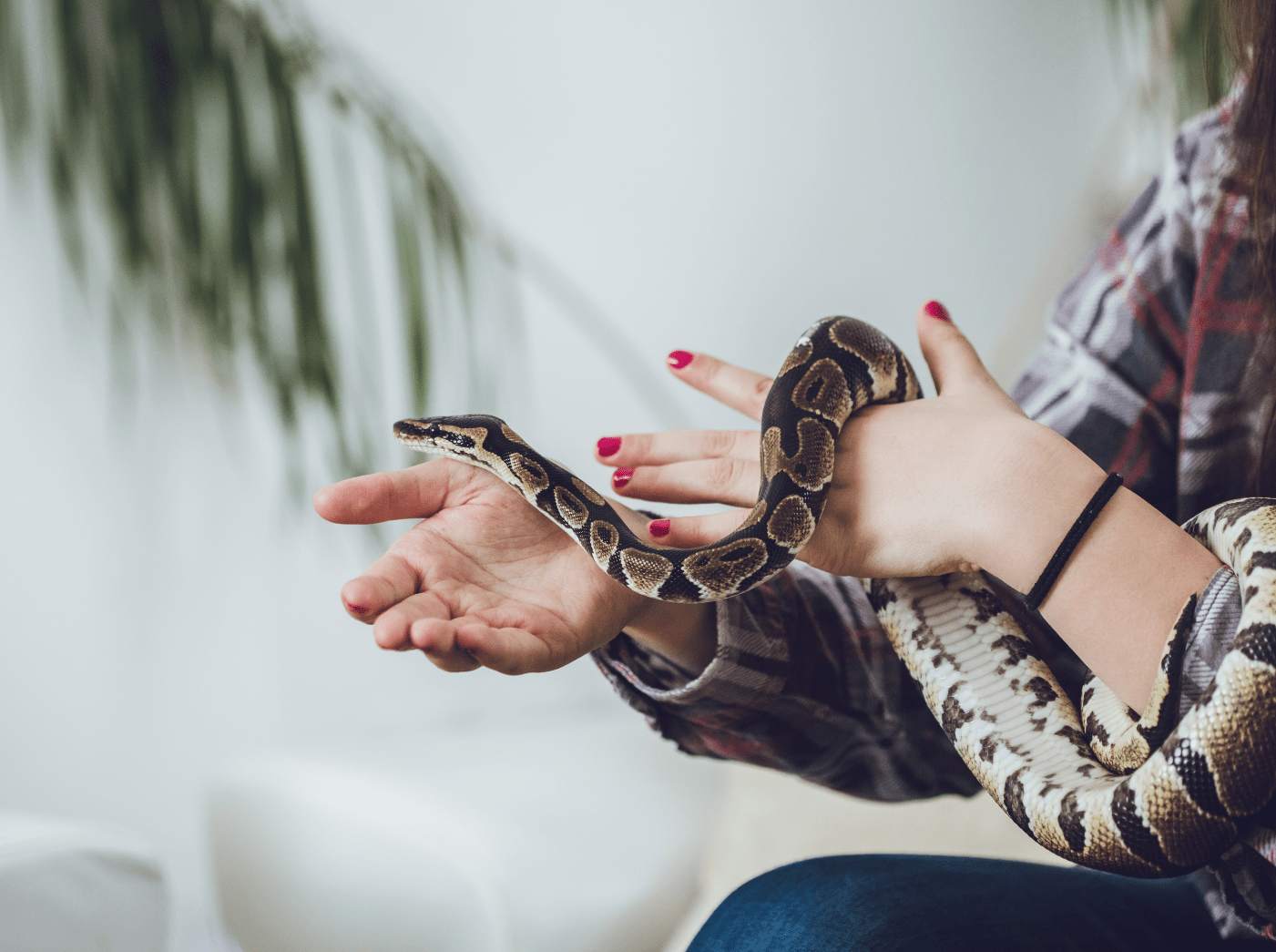
For many Brits, a house just isn’t a home until when there are pets around. Picture a happy domestic scene; there might be a fluffy kitten sat on a child’s lap, or a friendly dog greeting its owner as they return home. And what a warm welcome it is; pets can provide companionship and fun, and during these tough times, having a furry friend around has raised morale across the country.
In fact, the chief executive of Pets At Home, Peter Pritchard, has recently said that ‘’Pet ownership in the UK is going through a so-called “baby boom” with the Covid-19 pandemic seeing a surge in new owners’’.
So far, so fluffy.
But sometimes, people opt for a different type of pet. And though it may not be able to greet you at the door, nuzzle in for a cuddle, or prowl the perimeters deterring would-be-burglars, it’s still a wonderful companion to have around…
Yep, we’re talking about snakes. For those keen on a low-maintenance pet who doesn’t demand constant attention, then this slithery, slippery reptile might just be for you. Low maintenance though they may be, there are still some essentials to bear in mind before buying one; here are 6 things you should know before owning a pet snake.
THE MOST POPULAR TYPES OF PET SNAKE
For newcomers to the snake ownership game (we’re assuming you’re a beginner, since you’re here), it’s important to know that in the UK, there are three types of snake which make the most popular, easiest to care for pet; the corn snake, the ball python and the milk snake.
According to the specialists behind mysnakepet.com, it’s the corn snake which is the best seller for first time owners, largely due to ‘‘their beauty and docile nature’’, as well as the fact that they don’t grow as large as some of the other popular varieties here in the UK.
HYGIENE IS IMPORTANT
People should only buy snakes from reputable breeders and sellers. If they don’t, they risk their new pet having issues with parasites or carrying diseases. Once a purchase has been made, the new owner should always take the reptile straight to the vet for a check-up.
We’ll discuss snake-handling next, but snake owners should always wear gloves when touching the pet or removing its faeces. This is because snakes carry the salmonella bacteria, which can be especially harmful to people with compromised immune systems. It’s also particularly dangerous for children aged under five, so always handle with care (and gloves).
HANDLE WITH CARE
No, not because they’ll bite you. But rather, because snakes, for all their fearsome reputation, are actually surprisingly delicate creatures.
Your new pet should be left untouched during its first few days of feeding. This will allow it time to start settling in. Anyone who picks up a snake and holds it near their neck or face will risk the pet reacting defensively; this will rarely be a bite, but rather, snakes emit an unpleasant musky smell when they are picked up by people they don’t recognise. Fortunately, this won’t be an everyday experience and they’ll soon get used to you.
What’s more, be aware that there are also specific times when a person shouldn’t handle their reptile. They include feeding times and when they are shedding their skins, in particular.
THEY MAINLY EAT RODENTS
If you love snakes but hate mice or rats, this could be a real issue and one to weigh up carefully before you decide to buy a pet snake. Whilst some breeds will eat insects and eggs, most snakes prefer rodents, including baby mice.
Live animals can actually bite snakes while they are being eaten. For this reason, the food will need to be pre-killed and stored in the freezer. Make sure this will be okay with everyone in the house; you wouldn’t want anyone getting a nasty surprise when they open the freezer for some late night munchies!
The popular corn snake’s favourite food is mice, though rats and quail are also acceptable. Snakes will eat their food whole, so ensure that the rodent or small bird is completely defrosted and no greater than 1.5 times the widest part of your snake’s body.
SNAKES NEED PLENTY OF ROOM
It’s one thing to own a rabbit or hamster in a cage, but it’s another to have a snake. Whilst they may begin small, they can end up several feet long and several inches wide. Pet snakes can grow to weigh over 45 kg (the average weight of a 12 year old child!) and will need plenty of space to stretch themselves out.
For the sake of the snake’s health, the temperature and humidity levels of their tank will need to be consistently maintained; though it’s breed specific, a humidity of around 60% is normally required, with a temperature range of between 24 and 29℃. Some will require additional UV lighting to help them with their vitamin D production, too.
It’s also important to understand that snakes are skilled escape artists. They should therefore be kept in a sealed enclosure at all times. It’s all the more crucial when there are children or other pets in the home – or if the breed is venomous.
IT’S A LONG TERM COMMITMENT
These reptiles can live for 15, 20, or even 30 years, so it’s therefore essential to be sure there will always be someone who can look after your snake. Anyone who is more advanced in their years or who is about to have children should think carefully before embarking on this long, slithering journey.
THE BOTTOM LINE
Whether it’s companionship, shock value or simply the aesthetic splendour they bring, having a snake in the house isn’t an easy undertaking. But when a snake is stewarded well, it can provide many years of happiness and be a talking point with friends and visitors, too. Good luck!
Should you now be thinking twice about getting a snake, then let’s turn our gaze back towards the mainstream; here are 8 considerations if you’re thinking about adopting a dog.




